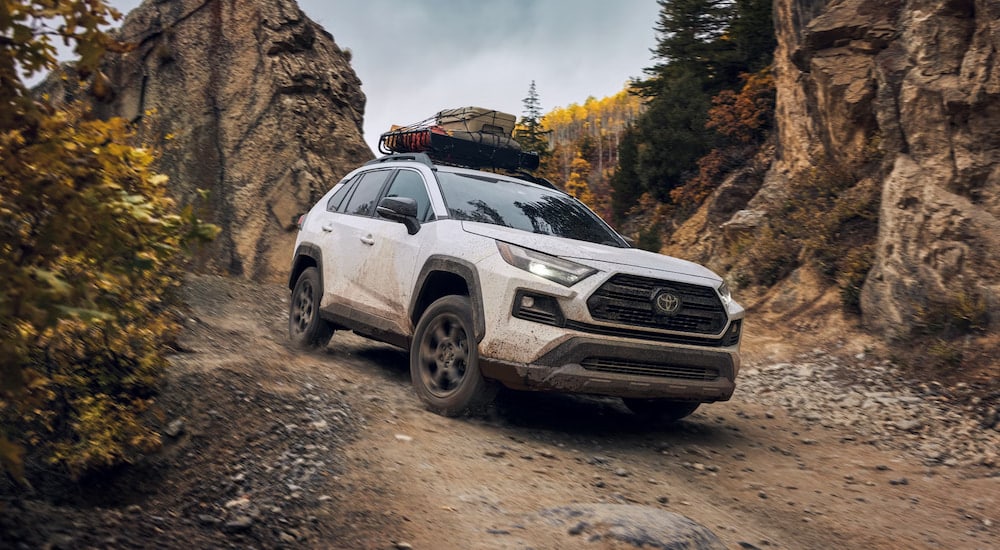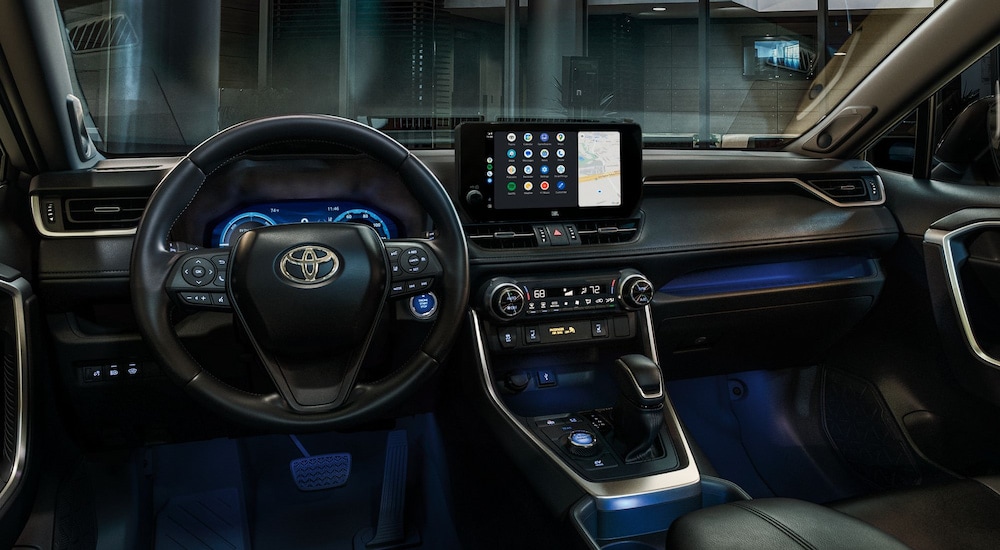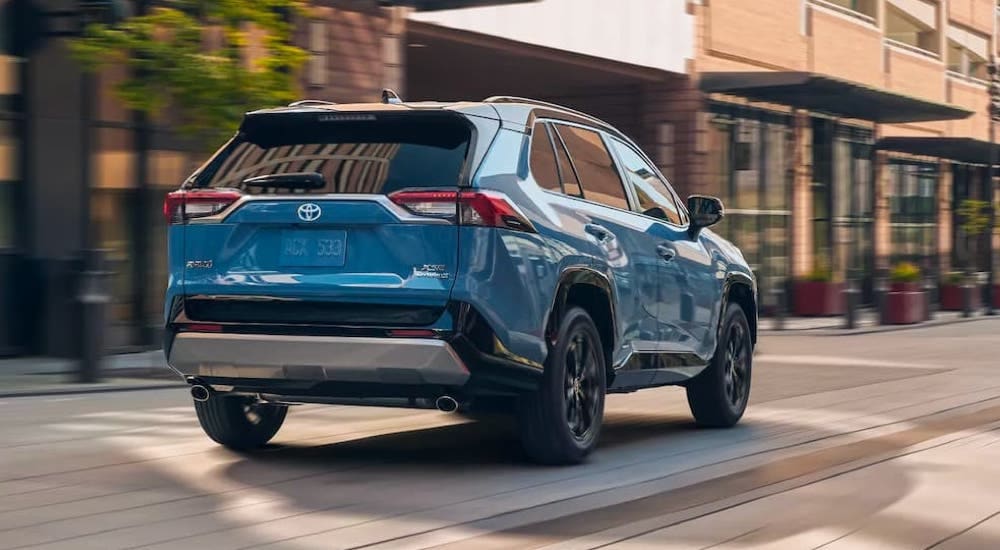
If you’ve been looking for a Toyota RAV4 for sale, then you’ve also probably heard about the Honda CR-V, one of the RAV4’s closest competitors. Both have long competed for the same awards and accolades in one of the most competitive segments of the automotive industry. What happens, though, when you place the 2024 models side by side? Does the pair of models have a photo finish contest, or is the competition won once you look at what each has to offer? Let’s dive into the details and find out.
RAV4 and CR-V Basics
It’s good to have an introduction before we delve into comparing these two compact SUVs. They are both popular, well-reviewed vehicles. The 2024 RAV4 and the 2024 CR-V both have a Five-Star Overall Safety Rating from the National Highway Traffic Safety Administration. Both are also from Japanese manufacturers, and because of the commitments their respective companies have made to protecting the environment, they both have multiple hybrid trims available.
The Toyota RAV4 was first released in Japan in 1994, making its debut in North America two years later. The 2024 RAV4 has an MSRP of $28,675 for the base LE trim, which goes up to $36,980 for the highest-tier trim on the gas-powered side, the Limited.[a] There are six trims for the gas-powered version and seven hybrid trims for a total of thirteen available trims.
Released just a year later, the Honda CR-V debuted in 1995 in Japan before arriving stateside in 1997. The 2024 CR-V has a base MSRP of $29,500 for the LX, the model’s base trim, and the top-tier gas-powered EX-L trim has an MSRP of $34,660. It has three trims for its gas engine and three hybrid trims for a grand total of six trims to choose from. It should be noted that Honda only offers the gasoline engine on the base trims and the hybrid on the higher trims, while Toyota lets you mix and match.
Performance and Towing to Exceed Expectations
The CR-V has a 1.5L four-cylinder turbocharged engine with a front-wheel drive powertrain coming standard, but the ability to upgrade all six trims to all-wheel drive. With this base engine, the CR-V puts out 190 hp and 179 lb-ft of torque. When the available towing package is added, the CR-V has a maximum towing capacity of 1,500 lbs. This is enough to tow a small utility trailer or boat but isn't particularly impressive for the segment.
Conversely, the RAV4 has a 2.5L four-cylinder engine with standard front-wheel drive on most trims, but some trims come with an all-wheel drive powertrain standard instead. Those with standard front-wheel drive have the option of upgrading to all-wheel drive. The RAV4 provides 203 hp and 185 lb-ft of torque with its base engine, handily exceeding the CR-V. When properly equipped, the max towing capacity is 3,500 lbs, well above the segment average. With that impressive capacity, you can tow a medium camping trailer or a fully loaded U-Haul.
The curb-to-curb turning diameter can make a difference when navigating tight maneuvers in crowded parking lots or heavy traffic on city streets. The RAV4 has a turning diameter of 36.1 feet. The CR-V, on the other hand, has a turning diameter of 37.3 feet. In other words, the CR-V requires more than a foot of extra room to maneuver than the RAV4 would in the same space.

The Battle of the Hybrids
Both the RAV4 and the CR-V offer hybrids because Honda and Toyota have made commitments to switch to an electrified lineup in the near future. Hybrids are an important step towards that. The CR-V has three hybrid trims, while the RAV4 has seven hybrid trims. The CR-V's entry-level hybrid trim, the Sport Hybrid, has an MSRP of $33,350. For the RAV4, the entry-level hybrid trim, the LE, has an MSRP of $31,725.[a] That’s a considerable difference if you're looking for an affordable option.
With their hybrid powertrains, the 2024 RAV4 gets an EPA-estimated mileage of 39 MPG combined with standard all-wheel drive, while the CR-V comes in with an EPA-estimated mileage of 37 MPG combined with its optional all-wheel drive. While the CR-V Hybrid gets a respectable 204 hp, the RAV4 Hybrid, on the other hand, turns out an even better 219 hp. That translates to some impressive results for the zero to 60 mph test.
The zero to 60 mph test is used to discover how fast a vehicle accelerates by timing how long it takes to reach 60 mph from a standstill. The CR-V Hybrid achieved 7.9 seconds, a respectable but bland showing. The RAV4 Hybrid gave a very robust 7.3 seconds. In a test where every tenth of a second counts, six of them make a massive difference in your capability to quickly maneuver your SUV on a busy highway or if you need to act quickly to avoid a potential collision.
Convenience Without Hidden Costs
It’s surprising how what seems like a small feature can turn out to be a big help when the time is right. Take the compact spare tire in the RAV4’s rear cargo area. It’s a very useful feature if you ever get a flat while on the road, and it comes standard on all trims. However, Honda only provides a spare tire on the gasoline-powered trims of the 2024 RAV4.
Driving without music might be what we learned in Driver’s Ed. Thankfully, your teacher was wrong about it being a hazard as long as you listen at a reasonable volume and limit distractions. Today’s touchscreens allow the use of the stereo with even fewer distractions. So throw yourself into car karaoke on your morning commute, even if the driver in the next lane is giving you a funny look at the stop light.
The CR-V has a standard seven-inch touchscreen display that controls the four-speaker audio system in the base model. The RAV4’s base model has an eight-inch touchscreen, and its stereo system comes with six speakers. This sets up a pattern regarding the infotainment features in the base trims. The CR-V does not have satellite radio unless you upgrade to the EX-L, while the RAV4 has that feature standard. Likewise, the RAV4 has a standard Wi-Fi hotspot, but the CR-V restricts that feature to the top Sport Touring trim.

The 2024 Toyota RAV4: At the Top for a Reason
There’s a reason that even with thirty candles on its birthday cake this year, the RAV4 continues to rank as the best-selling SUV in America. We’ve established that for all the positive points of the Honda CR-V, it just can’t beat the RAV4 when you look at comparable features. That’s only the beginning of what this award-winning Toyota classic has to offer its drivers.
The legacy of quality craftsmanship, which is the lifeblood of Toyota, can be seen in the RAV4. With a wide range of trims and features, you can make this compact dynamo whatever your heart desires. If you are looking for capability without sacrificing style, a vehicle that is feature-heavy without being price-heavy, and safety features that protect you and those you love the most, then you’re looking for a Toyota RAV4.